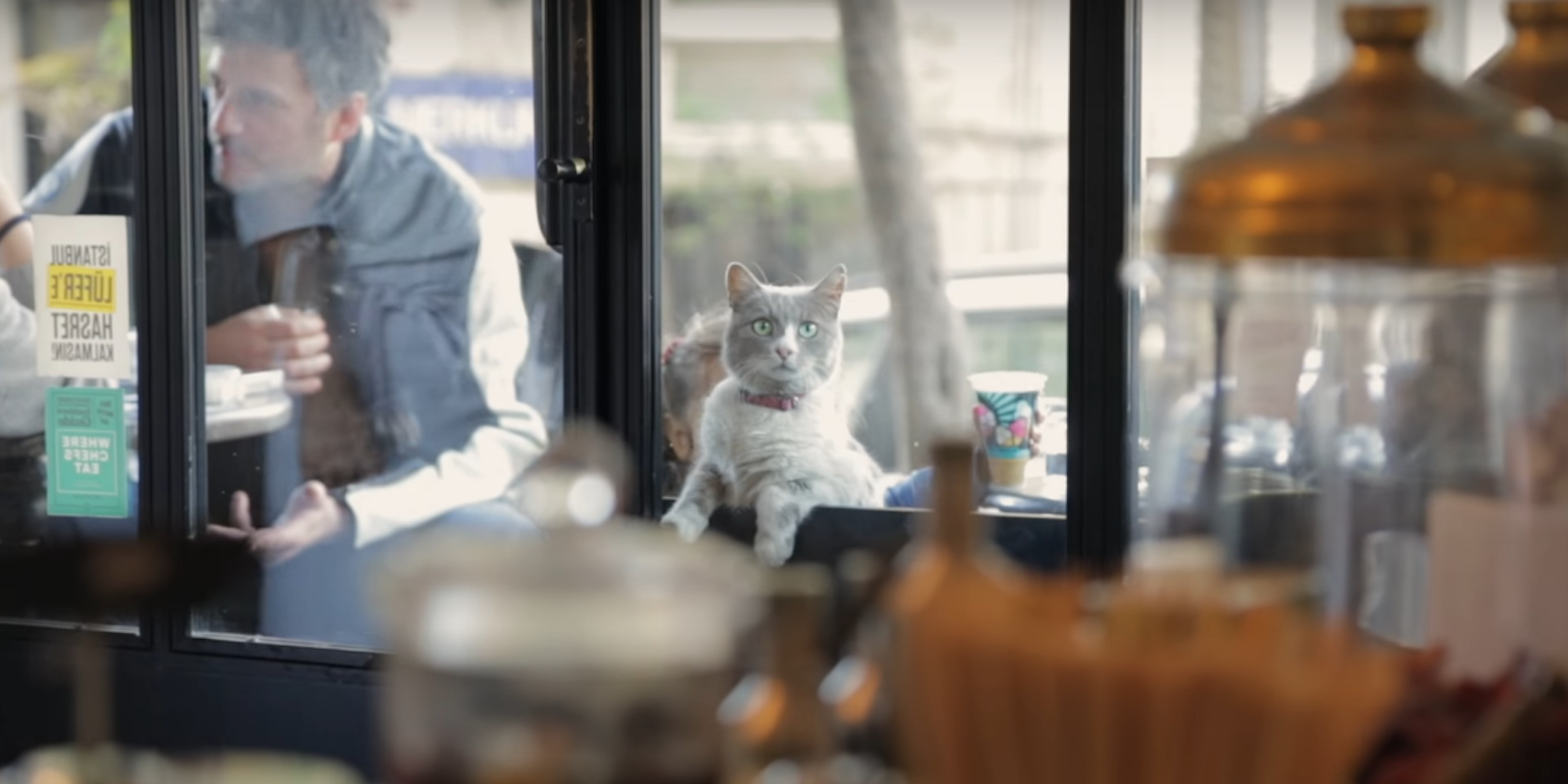In the film Kedi, director Ceyda Torun follows seven cats as they bound in and around the rooftops, shops, and docks of Istanbul. They come and go as they please, as cats do. They’re the stars, but humans manage to say a few words too.
Kedi, which debuts today on YouTube Red, has an obvious fondness for its subject. The relationship between humans and cats is as old as the city, and humans address them on a spiritual level. A shop owner explains we must be on the same “frequency” as cats. “They remember if you made a connection,” says one woman. A man recounts how cats kept him from a troubled childhood, another says they helped him with his mental health. In Istanbul cats live alongside people, who prefer them to be there and be free.
Torun, who’s originally from Istanbul, tells the Daily Dot that “cats were often my best friend growing up,” so the subject matter seemed natural. The pitch for her first feature film also came “right at the peak of the internet cat renaissance,” which certainly gave Kedi a marketable angle. The relationship with cats is much different in the States—they aren’t just pets forced to live within our domestic schedule, they’re made into viral stars with Instagram accounts and tour schedules. As one interviewee says, people often “expect a return on an investment” with cats. In Kedi, a more natural relationship appears, one of mutual respect. Torun says the most interesting aspect of the film became the “intertwined lives” of cats and humans.
One cat with “manners” won’t cross into a human’s restaurant. Instead it paws at the window and tries to make eye contact, but the baker knows what it likes best. Elsewhere there are lovers’ quarrels and tyrannical personalities that inform battles for territory. A longhaired ratcatcher keeps pests from a seaside restaurant. A new mom has to become a charming hunter to survive. It has all the makings of a great ensemble drama.
But there was also a challenge to “make a film that felt like a cat,” Torun says. She and co-producer Charlie Wuppermann spent two-and-a-half months filming and interviewing people about local cats. To get on felines’ level, they mounted a camera on a remote-control car, which the cats didn’t like. Torun says they only responded to a camera if a human was with it.
“They had a particular love for the lens, it seemed like a big eye to them,” she says. “As we like to be observed and validated, they do too.” However, she wanted actions to come naturally, without manipulation. And there were boundaries in the casting process.
“If we approached a cat and he left, he wasn’t giving consent to be filmed,” Torun says.
This unspoken dialogue could be interpreted different ways, of course, but Kedi embraces history—at least part of it. Torun speaks of fossilized cat bones that were recently dug up in Istanbul, which point to evidence that a human possibly tried to repair a cat’s broken leg: “No generation knows Istanbul without cats,” she says.
The changing landscape is also a theme, as gentrification creeps in.
“The bigger the city becomes and the more alienated we all get, we seek ways to connect with nature,” Torun says. She’s hesitant to discuss politics in Turkey, but there are subtle nods in Kedi. We see one cat in front of political street art; elsewhere, a woman pets a cat and talks about how expressing femininity in the city is difficult.
“The cats will endure,” says Torun. “They’ve seen harder times in that city. Political and environmental things are impacting all of us. The relationship may change, but I like to believe they will endure. But I don’t know if we will endure in the same way.”
Torun says she had to ask herself along the way if they were really making a film about cats while political upheaval took place. She ultimately wants Kedi to be a “meditative journey, allowing your mind to wander for a few days with the cats.” And she kept coming back to her conversations: “I know there was so much to gain from seeing the goodness in other people.”


